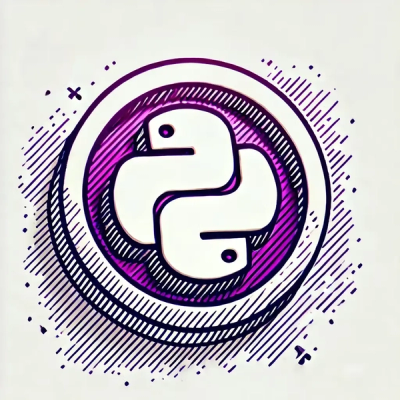Loom
Loom gives you a way to build your own atomic design systems. Organised using ITCSS, and uses BEM as a naming convention, it aims to give you a quick way of scaffolding sites, and then give you a way of building your own atomic components.
Loom tries to find that sweet spot between Atomic CSS and manually written, appended-to-the-end-of-one-huge-css-file CSS.
It's highly modular, and lets you easily extend it with your own modules and classes.
Example
.c-fancy-button {
@include button(get-color(white), get-color(primary-background));
@include font-size(large);
padding: get-spacing(xsmall) get-spacing(small);
}
Manifesto
Loom's manifesto and opinions:
- Loom tries to make things easier for a developer.
- Loom doesn't come with a "theme" or a prebuilt pattern library. Loom helps you to weave your own pattern libraries.
- Loom is a tool and isn't designed to "drop in and go". It is something to help professional designer/developers in their everyday tasks.
- Loom loves design systems. They're built into it from the core, with standardised ways of accessing global colours, spacing units and fonts.
- Loom doesn't try and force you into the binary of choosing to write components or utility classes. It leaves that choice up to you.
- Loom is opinionated about Sass structure, but kinda indifferent to CSS output. Loom would LOVE it if you used BEM, but you don't have to. Your final UI components can be written however you wish.
- Loom is modular. You can easily add your own modules into a layer and make them work alongside the prebuilt ones.
- Loom loves best practise, and is quite opinionated on this, even if it doesn't force your hand. It loves the avoidance of nesting, styling of classes rather than base elements and the avoidance of specificity battles!
- No nesting. Loom really doesn't like nesting. Nesting makes for horrible specificity problems.
- No IDs. IDs make for even more horrible specificity problems. Just... no.
- Specificity should come from source order, not selector specificity weight.
- CSS decoupled from HTML. Only the Base Elements layer touches HTML directly, and then only to lightly style it. Every other layer should interact with HTML via classes.
- No
@extends. These so, so, so easily mess up the source order of a project. Because ITCSS, the core of this, is source order dependent, it's best to avoid any use of @extend.
- Loom knows when others do it better. Browser prefixes are (when necessary) best left to Autoprefixer, no?
Installation
Eventually this will be an npm module, a bower module and gem. For now it's installable via npm:
$ npm install loomcss --save-dev
Or go old-school and copy/paste the contents of the assets folder into your project. Hey, whatever works, right?
Usage
Once installed, you will need to add the installation path to your own build system. This will probably be something like node_modules/loomcss/assets.
Once you have made that folder available to your build you can access the Loom layers using:
@import 'loom/10-global-settings/misc';
Please DON'T just link to main.scss! This will prevent you getting access to the interweaved layers of the ITCSS stack (it's there as an example only). Instead, copy the list of imports from main.scss into your main project file. Yes, it feels unusual, but you'll gain a lot of power by doing so.
This library is a basis for your own design system and won't give you much visually out of the box!
Organisation layers
The Sass in the project is arranged in layers, with specificity and scope increasing as you decend from layer 10 to 100. Layers at the top (10) are extremely broad in scope and of low specificity, and those at the bottom (100) being extremely specific and high specificity.
You can add your own layers, but the default ones are as follows:
10 - Global settings
Sass global variables. Should only contain those things used by multiple layers and modules.
20 - Tools
Mixins and functions to support the lower layers.
30 - Generic
Generic CSS, imported Normalize and Reset CSS. Things that aren't really visual, but have a lot of impact across the project.
40 - Base elements
Specific simple styling for base elements. Loom gives some extremely simple styling to those elements that have a standard visual "state" and are not normally styled with the aid of classes (<p>, <ul>, <dl>, etc).
Headings (<h1> to <h6>) are the exception to this, as they are often used to provide semantic meaning, and so have their styling removed by default.
In general styling for must be added via a module from the Objects, UI Components or Utilities layers.
50 - Layouts
Layer modules that provide layout-specific styling. They are used on wrapper containers that themselves contain Objects or UI Components.
NOTE: Complications will likely occur if a Layout module and a lower layer module are used on the same HTML element!
60 - Objects
Complex chunks of CSS that are used as the base for UI Component modules. Each object is defined as a mixin and expressed as a class, and each class can be used on its own.
The classes can be used for quick scaffolding, anchoring their classnames directly to CSS. (However, Loom opines that they should eventually be converted into UI Components, which directly consume the Object mixins. But Loom has some funny ideas and talks about The War a lot).
Some things might stay as class-based objects, and be used as a base for skinning, in true OOCSS style. For example, .button can serve as the OO base for .c-button and .c-button--primary.
<button class="o-button c-button c-button--primary">Continue</button>
Or .c-button might consume @include o-button directly:
.c-button {
@include button();
}
<button class="c-button c-button--primary">Continue</button>
Your choice!
70 - UI components
These are highly visual components built from Object mixins, Loom settings and custom CSS.
This layer will probably form the core of your own projects! :D
80 - Utilities
Utility modules provide classes that do one thing. While most visual styling should come from the component layer, there are always occasions where a separate class is needed to quickly nudge a component into shape.
Loom thinks that these should be used with caution, and that excessive use of these implies that a component or setting is lacking.
90 - Trumps
"Trumps" as in "a trump card". Extremely high specificity selectors live here!
Anything in this layer is used with some embarrassment. An example use might be to override CSS coming from external sources.
The only layer that !important is permitted in a module.
Selector notation
By default this project uses BEM notation for the optional CSS selectors.
Fonts
You can specify fonts via the $LOOM-fonts. By default there is a primary and a secondary font. The default usage is secondary for headings and primary for everything else.
Each of these has a base and a webfont variant. These are for use with a font-observer system, that will add the class specified in $LOOM-fonts-loaded to the HTML element, allowing webfonts to be used without FOIC occurring.
Developing
Always looking for fellow conspirators.
Reading



